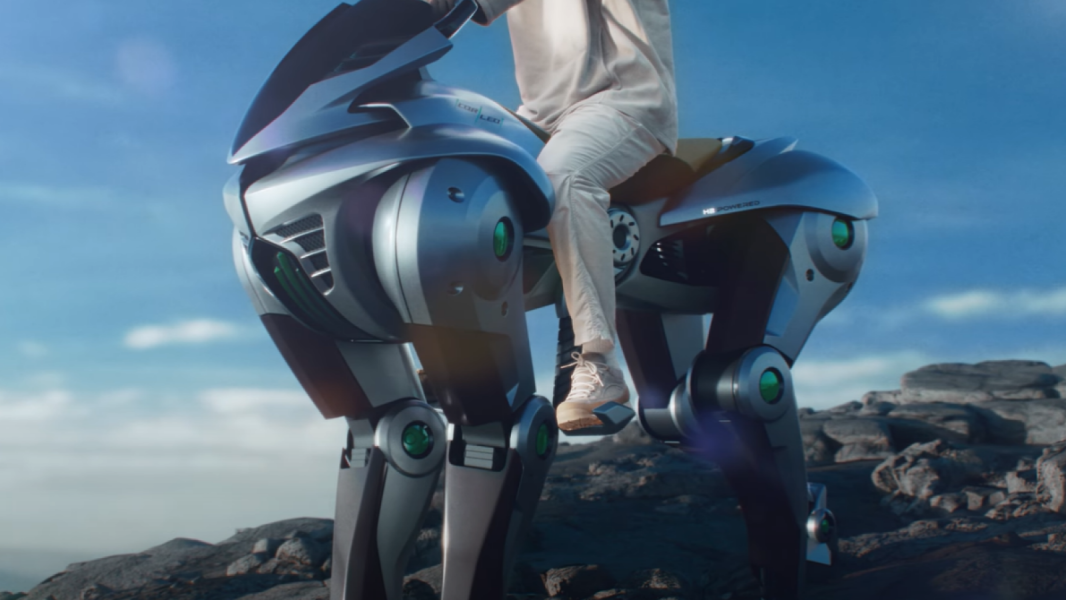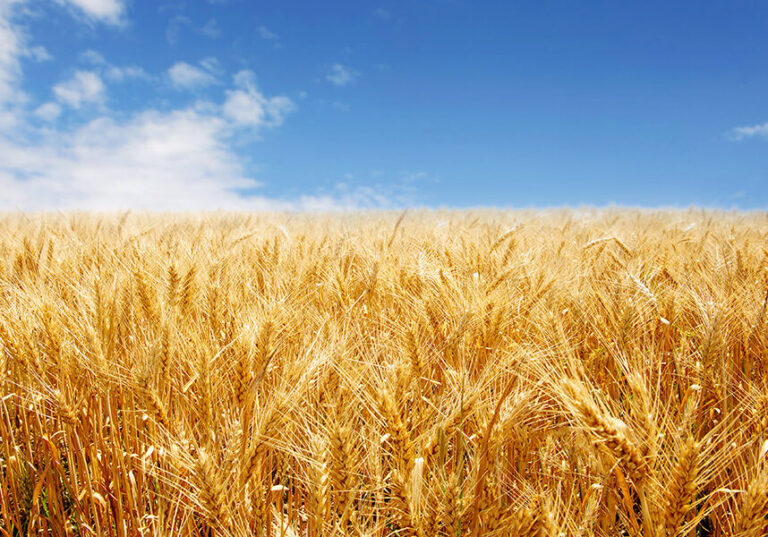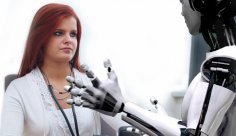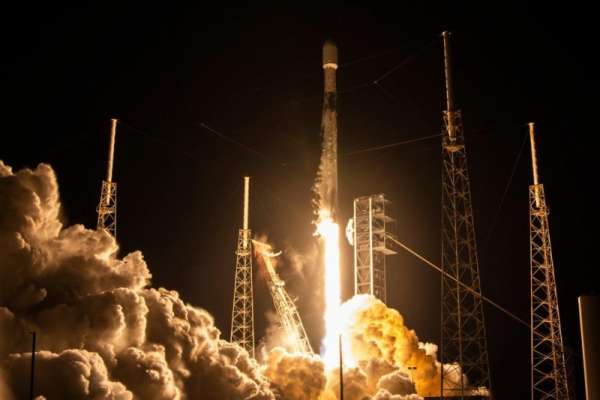
The robot has four legs that can move autonomously, as well as inward-facing knees and rubber, two-toed, cloven hooves that resemble those of a goat. (Image credit: Kawasaki Heavy Industries, Ltd. Retrieved from Youtube)
A new kind of robot has been unveiled that is inspired by an animal – this time it’s a horse.
Corleo, a hydrogen-powered, four-legged robot designed to transport people, was unveiled by Japanese manufacturer Kawasaki Heavy Industries at a presentation ahead of the Osaka-Kansai Expo 2025, which opens on April 13. However, no prototype in action has yet been shown to the public, as the robot is still in the conceptual stage.
This robot, unlike previous robotic animals such as Boston Dynamics' Spot the dog, is designed to be ridden by humans, as the device uses artificial intelligence (AI) and specially designed legs to navigate complex routes.
Kawasakiが提案する未来のパーソナルモビリティ「CORLEO」 – YouTube
See more
A promotional video released by Kawasaki on April 3 shows Corleo descending rocky cliffs, traversing an overgrown forest, galloping across snowy landscapes and fording a stream. However, the video does not contain actual footage, as the robot has not yet reached the stage where it can be ridden.
“CORLEO is a completely new type of transportation that combines Kawasaki's motorcycle and robotics technologies,” Kawasaki CEO Takashi Torii said, according to Tokyo Weekender.
The robot has four legs, each of which can move independently. The legs also have inward-facing knees and rubber, two-toed, cloven hooves, similar to those of a goat or deer. The company hopes that one day it will be able to carry up to two people on its back in a variety of conditions.
“The rear of the support can swing up and down independently of the front, allowing it to absorb shock while walking and running,” Kawasaki explained on the Corleo concept page on its website.
“The four legs are equipped with hooves with a left and right split structure made of rubber, a material that cushions uneven surfaces and prevents slipping,” its website says. “These hooves are able to adapt to a variety of terrains, including grasslands, rocky areas, and gravel fields.”
Horsepower
Kawasaki suggests that Corleo will be equipped with an artificial intelligence system that will improve its balance and navigation, and will respond to the rider’s body movements – just like a real horse. The robot will also have a screen on the windshield in front of the rider, like a motorcycle, displaying important information.
“It features a dashboard that displays hydrogen levels, route to the summit, center of gravity location and other information. At night, it provides optimal riding conditions by projecting markers onto the road surface to show the way forward,” Kawasaki added.
The Corleo will be powered by a 150cc engine that uses a hydrogen fuel cell. Hydrogen fuel cells work by converting the chemical energy of hydrogen into electricity. The hydrogen gas is split into protons (H+) and electrons, and the electrons create electricity that can power the engine. This process produces zero emissions, with the only byproduct being water. Hydrogen fuel cells are easily recharged by refilling them with hydrogen gas.
However, the robot remains a concept for now. Kawasaki has suggested that it could be launched by 2050, but no specific timeline for development has been announced, and there are no current plans for commercialization. The company has also not revealed any detailed technical specifications, including Corleo’s speed, range, or battery life.
At the exhibition
Sourse: www.livescience.com





